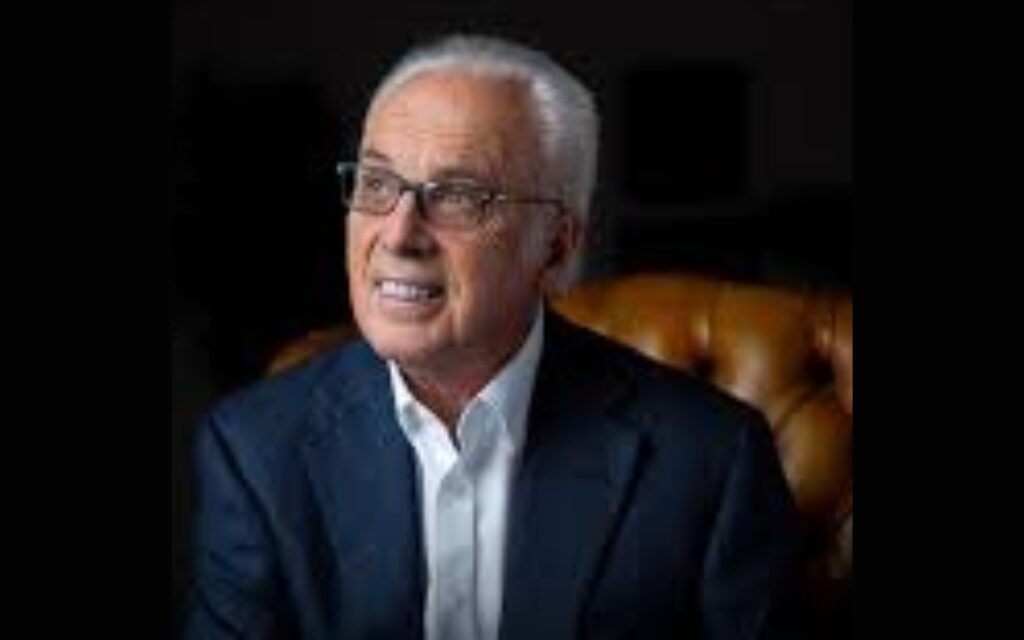This is the third post in a five-part series titled, “25 Influential figures in Church History.“
Christianity wouldn’t be what it is if not for several men who labored faithfully to lay the foundation and build the pillars of the Church. To remember and appreciate their legacy, I have compiled a list of twenty-five men whose works still influence us today. This list is neither exhaustive nor comprehensive, so I encourage you to check out the sources in the footnotes for more information.
Onward we go with the puritans!
The Puritans (the 1500s – 1700s)
The puritans were a diverse group of people who lived between the fifteenth and seventeenth centuries in Europe, but mostly England. Despite the protestant reformation of 1517, the Church of England still followed many practices of the Roman Catholic Church.
As a result, some English protestants wanted to purify the church from these unbiblical practices entirely. Due to their advocacy for more purity of worship and doctrine, they were called puritans. It was initially a derisive name that described people who were perfectionists.
Nevertheless, the term stuck, and these protestants are still known as puritans today.
The puritans also played a significant role in secular history. Their reforms contributed to the English civil war of 1641, and they helped found the American colonies.
But in church history, the puritans are mostly remembered for their high view of the Holy Scriptures. Many of them were prolific writers and left behind scores of writings that are still in print today.
Here are some prominent Puritans.
17. John Owen (1616 – 1683)
John Owen was a minister, writer, and vice-chancellor of Oxford University. Many theologians consider him the greatest puritan theologian and one of the greatest reformed theologians of his day.
Owen was born in Stadham, England, to a puritan minister. He studied at Oxford University, where he finished his bachelor’s and master’s degrees at 19. During his studies, Owen spent most of his time studying and averaged only four hours of sleep per night.
After his studies, he became a pastor and started writing theology works, many of which became classic literature. His contemporaries received his writings well, and he was even invited to preach before the Parliament. He married a Mary Rooke in 1644, and they had eleven children. However, all but one of his children died before adulthood.
Owen kept on speaking at public events, and he rapidly became well-known in England. So much that Oliver Cromwell, an English general, and statesman, asked Owen to become his chaplain and adviser. When the Parliament executed King Charles in 1649, Cromwell became the Lord Protector of England. This new position opened mew opportunities for Owen to exert religious influence in England’s politics. Cromwell later appointed Owen as the vice-chancellor of the University of Oxford.
However, Cromwell and Owen’s friendship ended when Owen opposed Cromwell becoming king.
Shortly after, Cromwell died and was replaced by his son. Then the Parliament restored monarchy, and Charles II became king. This led to the passing of laws that prevented nonconformists like Owen from having positions in the church.
Consequently, Owen was sacked alongside 2000 other ministers.
John Owen continued to preach as much as he could to small groups of believers. He even turned down a pastorate position in Boston so he could minister to his countrymen. He continued to preach and publish books until his death on August 24, 1683, and was buried in Bunhill Fields, London.
Throughout his life, Owen has written over 80 books. Some of his most notable ones include: Overcoming Sin and Temptation, The Glory of Christ, Communion with God, The Holy Spirit, and The Death of Death in the Death of Christ.
18. John Bunyan (1628 – 1688)
John Bunyan was a puritan minister, preacher, and author. He is famously known for writing The Pilgrim’s Progress, the most widely sold book after the Bible, and probably the most excellent Christian allegory ever written.
Bunyan was born in Elstow, Bedfordshire, England. His father, Thomas Bunyan, was a tinker, and John learned his trade so he could take over the family business. But in 1642, the English civil war began. So Bunyan joined the parliament army from 1644 to 1647. Shortly after his discharge, Bunyan married a Christian woman even though he was not. Together they had four children; the oldest Mary was born blind.
Bunyan’s wife introduced him to two Christian books: The Plain Man’s Pathway to Heaven by Arthur Dent and The Practice of Piety by Lewis Bayly. These books convicted him of his sin, and he started attending church regularly.
But it was the influence of a group of Christian women whose “joyous conversation about the new birth and Christ deeply impressed him,” and the spiritual guidance of Pastor John Gifford that Bunyan came to a saving knowledge of Christ. He repented from his sin and was baptized in 1653 in the Ouse River.
After his conversion, Bunyan began to preach and write. In 1656, he published his first piece titled “Some Gospel Truths Opened,” which was an opposition to the Quakers.
He continued writing and his works started giving him some reputation. But amid his flourishing ministry, his wife died. He remarried in 1659 to a woman named Elizabeth and had two children with her. It was also around that time that Charles II became king and only authorized licensed Anglican clergy to preach.
Even though Bunyan was not an Anglican nor licensed, he continued to preach.
Consequently, he was arrested in 1660 for preaching without a license and thrown in jail. Three months into his jail time, Bunyan was asked to renounce preaching in exchange for his freedom. He said, “If I am freed today, I will preach tomorrow.” So Bunyan remained in prison for twelve and a half years. He spent most of his time writing books and making shoelaces to support his family.
Bunyan was released from jail in 1672, and he immediately resumed preaching. He was arrested again three years later for preaching without a license, but only for six months. And it was during his second imprisonment that he wrote his most famous work, The Pilgrim’s Progress.
After his release from jail, he spent the remainder of his life preaching and writing. He died in August 1688 after developing a fever and was buried in Bunhill Fields alongside other nonconformists.
Besides The Pilgrim’s Progress, John Bunyan is also remembered for his preaching and teaching skills. John Owen once said of him, “Could I possess the tinker’s abilities for preaching, please your Majesty, I would gladly relinquish all my learning.”
Some of his other famous works include Grace Abounding to the Chief of Sinners and The Holy War.
19. Matthew Henry (1662–1714)
Matthew Henry was a nonconformist pastor and author. And he is best known for his six-volume expository commentary on the Bible.
Henry was born in Broad Oak, Flintshire, in a Christian puritan family. He was born the same year the Act of Uniformity that barred 2000 pastors (including his father) from holding a position in the church was passed. Thinking he could never be a pastor, Henry officially studied law but learned theology privately.
His father mostly educated Henry, and it is said, Henry could read the Bible by age three, and could write Latin and partly read the New Testament in Greek by age nine.
In 1686, Henry began preaching in his neighborhood, which then evolved to an ordained Presbyterian position in 1687 (the laws had become less stringent by then). He also got married that same year to Katherine Hardware, but two years later, she died during childbirth. Henry remarried a year later to a Mary Warburton, and together they had nine children, three of whom died in infancy.
In 1704, Henry started writing his commentary on the Bible. However, he only completed Genesis through Acts before his death ten years later. The remainder of his commentary was compiled by his followers, who pulled from his writings and preaching notes.
Henry’s commentaries were well received and put him in the spotlight. It led to his leaving the position he had held for 25 years for a more influential one in Hackney, London. This new position gave Henry a lot of preaching opportunities—almost every day of the week.
However, it was short-lived.
Two years later, in 1714, Henry fell from his horse while visiting his old neighborhood of Chester. He died the following day and was buried in the chancel of Trinity Church, in Chester.
Some of his most famous works include Commentary on the Whole Bible, A Method for Prayer, and The Pleasantness of a Religious Life.
Other Puritan writers and their works
They have been a resurgence in puritan reprints recently, and many Christians are discovering or rediscovering the riches of puritan writings. Banner of Truth mainly has been reprinting classic puritan works in their Puritan Paperback Series.
So here are some other notable puritan ministers and their works:
I. William Perkins (1558-1602): The Works of William Perkins, The Art of Prophesying, The Foundation of Christian Religion Gathered into Six Principles.
II. Richard Sibbes (1577-1635): The Bruised Reed, Glorious Freedom: The Excellency of the Gospel Above the Law.
III. Jeremiah Burroughs (1599–1646): The Rare Jewel of Christian Contentment, The Evil of Evil: The Exceeding Sinfulness of Sin, Gospel Worship.
IV. Thomas Brooks (1608–1680): Precious Remedies Against Satan’s Devices, Heaven on Earth, The Secret Key to Heaven: The Vital Importance of Private Prayer.
V. Richard Baxter (1615–1691): The Saint’s Everlasting Rest, The Reformed Pastor, The Practical Works of Richard Baxter.
VI. Stephen Charnock (1628–1680): The Existence and Attributes of God, Christ Crucified: The Once-For-All Sacrifice.
VII. Thomas Watson (1676-1732): The Art of Man-Fishing, The Crooke in the Lot, Repentance.
Other notable books from puritan writings are Valley of Vision and Piercing Heaven, which are a collection of puritan prayers and devotionals. And A Puritan Golden Treasury, which is a collection of puritan quotations.
I mentioned a lot of books because we all need to read Puritan writings. You can find some excellent reasons why here, here and here. I have recently purchased a few of the books mentioned above, and I am excited to begin reading the puritans. I hope you will too!








Thank you. I enjoyed this review.
Thank you!